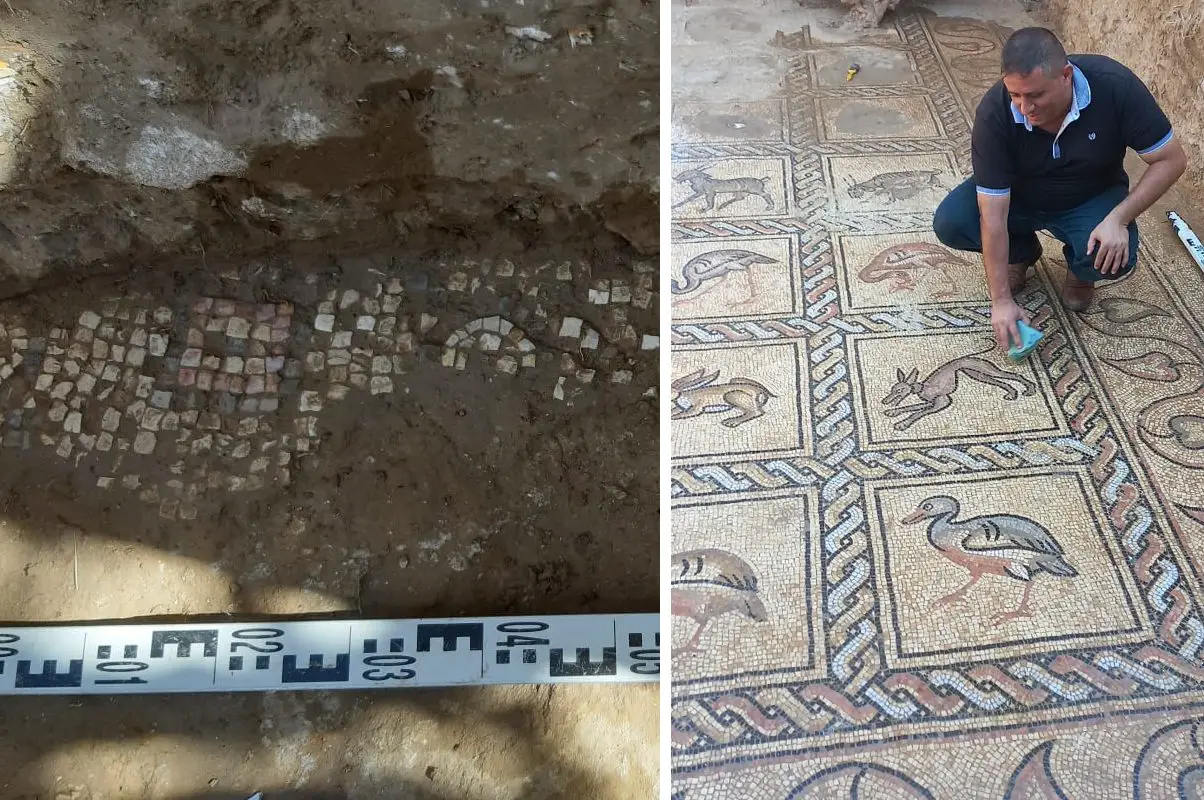A farmer has uncovered Byzantine-era mosaics close to the border with Israel, according to a statement announced by the Palestinian Ministry of Tourism and Antiquities.
Suleiman al-Nabahin, a Palestinian farmer, was planting an olive tree in the Bureij refugee camp half a mile from the border with Israel, when he found the mosaics and reported the discovery to local authorities.
During the Byzantine period, Palæstina Secunda or Palaestina II was a Byzantine province from AD 390, until its conquest by the Muslim armies in AD 634–636.
Several mosaic panels have so far been excavated by Gaza crews working in partnership with an international team of experts from the French Biblical and Archaeological School of Jerusalem.
One of the mosaics depicts animals such as birds, rabbits and canines, which are surrounded by a floral leaf pattern, while others feature aspects of social life and geometric designs. Although excavations are still in their infancy, the mosaics are believed to date from somewhere between the 5th to 7th century AD.
Excavations have also revealed evidence of structures from the remains of surviving walls, and high-status items such as glass artefacts.
“This provides us with historical information and details about the ancient civilisations and anthropology in Gaza, the historical and economic relations with the ancient regional environment and the status of Palestine across the world” said the ministry.
René Elter, an archaeologist from the French Biblical and Archaeological School of Jerusalem, told the AP that “These are the most beautiful mosaic floors discovered in Gaza, both in terms of the quality of the graphic representation and the complexity of the geometry.”
Header Image Credit : Palestinian Ministry of Tourism and Antiquities





